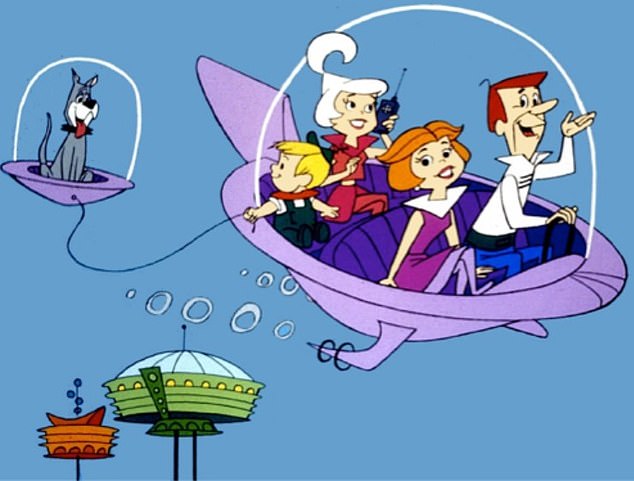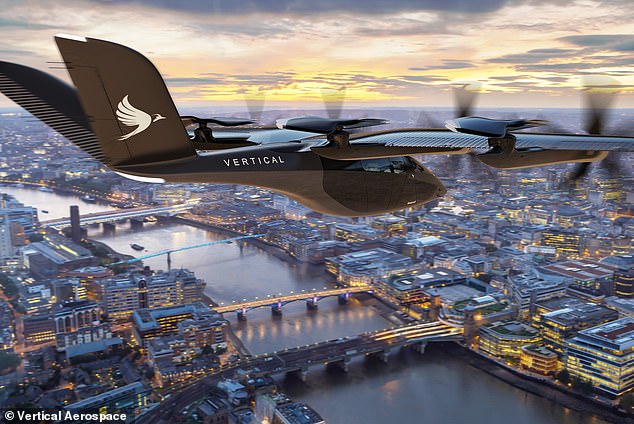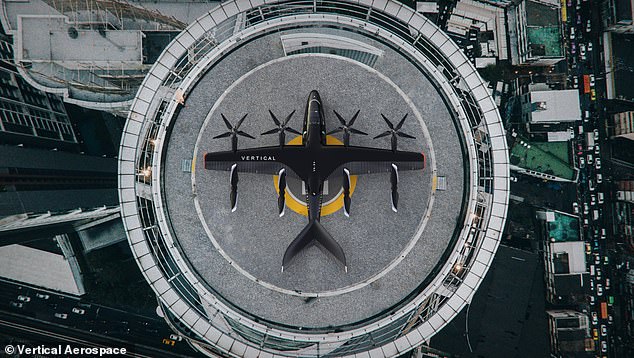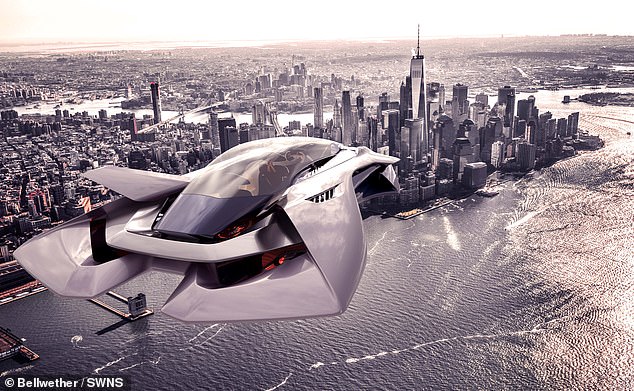The real-life Jetsons! Experts say we’re on the cusp of a flying taxi BOOM – with futuristic vehicles set to take to the skies at the Paris Olympics next year
>
Fans of the classic Hanna-Barbera cartoon “The Jetsons” will know that it is set in a comedic future where flying cars are a common sight.
Meanwhile, the 1990s cult film ‘The Fifth Element’ features Brue Willis as a flying taxi driver, ferrying passengers through the skies of New York in the 23rd century.
But experts say the days when flying taxis were consigned to fiction will be over in just a few years.
Within a year, the first commercial air taxi will carry visitors on tours of Paris during the 2024 Summer Olympics, ultimately heralding the arrival of the technology.
Sir Stephen Hillier, chairman of the Civil Aviation Authority, thinks we are on the cusp of a ‘flying taxi boom’ and on the cusp of a ‘new revolution’.
Travel in the craft is likely to cost travelers around £5 to £10 per kilometer traveled – between that of a helicopter and a private car. Concept image shows a Virgin brand aircraft, built by Vertical Aerospace, flying over London

Fans of the classic Hanna-Barbera cartoon “The Jetsons” will know that it is set in a comical future where flying cars are a common sight
Mr Hillier has called for a global common standard for taxi flying, ahead of the “widespread” adoption of these vehicles, which will utilize air space and reduce road congestion.
And just like the electric car revolution happening on the ground, most flying taxis will be electric, meaning they won’t emit toxic pollutants.
“If we go outside at the moment and look at the sky, it is largely empty,” Mr Hillier told the press Financial times.
“And we will now have the technologies to make much more use of that environment than we have in the past.”
Investors around the world are pumping millions of dollars into flying taxi projects, which are going through several testing phases.
Bristol-based Vertical Aerospace is a British company working to build a fleet of electric vertical take-off and landing (VTOL) aircraft as part of a £2.8 billion ($4 billion) project.
VTOL aircraft can rise straight into the air instead of having to build up speed on the ground first, requiring less runway space.

The classic ’90s film ‘The Fifth Element’ features Brue Willis as a flying taxi driver ferrying passengers through the skies of New York in the 23rd century. Pictured, screenshot from the film

Vertical Aerospace, a Bristol-based company, is working to build a fleet of electric-powered vertical take-off and landing (eVTOL) aircraft as part of a £2.8 billion ($4 billion) project. Virgin Atlantic will buy up to 150 of the aircraft, called VA-X4, to deliver a Virgin Atlantic-branded short-haul network around some of Britain’s busiest cities
In a few years, VTOL could potentially take off and land at airports on the outskirts of a city, or even on landing pads at the top of skyscrapers.
Sir Richard Branson’s Virgin Atlantic will buy up to 150 aircraft from Vertical Aerospace, called VA-X4, to deliver a Virgin Atlantic-branded short-haul network around some of Britain’s busiest cities.
Stephen Fitzpatrick, CEO and founder of Vertical Aerospace, explains the times that flying vehicles are safe and have a one in a billion failure rate.
“We now have the technology we need to make these air taxis,” he said.
“And we are in the process of demonstrating that they meet the very strict safety standards that you need to manufacture commercial aircraft.
“So we are in the certification phase and probably in two to three years before the first commercial air taxis hit the market.”
Fitzpatrick thinks electric taxis will be cheaper and faster than ground taxis.

The plane could potentially take off and land at airports on the outskirts of a city, or even on landing pads at the top of tall buildings

Investors around the world are pumping millions of dollars into flying taxi projects, which are going through several testing phases. Pictured is an artist’s impression of the VTOL of the British company Bellwether over New York
For example, an air taxi from Heathrow to Canary Wharf costs £50 with a journey time of eight to ten minutes.
By comparison, a traditional taxi normally takes two hours to travel the same route during rush hour and costs £150.
Another company, Electron Aviation, based in the Netherlands, plans to launch a ‘sky-hailing service’, similar to Uber, that users can book through an app.
Electron Aviation’s fleet of 300 km/h battery-electric air taxis is expected to become a reality in the Netherlands and Great Britain in 2027.
Although the company’s fleet will not be a VTOL fleet – they will be launched as commercial aircraft – this should not be a problem as they will use existing airport runways.
Meanwhile, German company Volocopter will transport passengers around Paris during the Summer Olympics next year.
It has already conducted a successful test flight with its VoloCity VTOL, which looks more like a helicopter or a giant drone than a car.

Electron Aviation plans to launch its first electric air taxis in the Netherlands in 2027, before bringing its sky-hailing service to Britain
Earlier this month, British firm Bristow Group announced it had ordered two VoloCity machines with the aim of establishing a commercial passenger and freight service in the US and UK.
When VoloCity is actually put to work at the Olympics, it will be “a tremendous milestone” that would help move the industry forward, Fitzpatrick admitted to the Times.
However, it will be a while before a major city turns into something worthy of the Jetsons, complete with elaborate robots and holograms.
“We need more infrastructure, we need more pilots, but the technology is there today,” he said.
